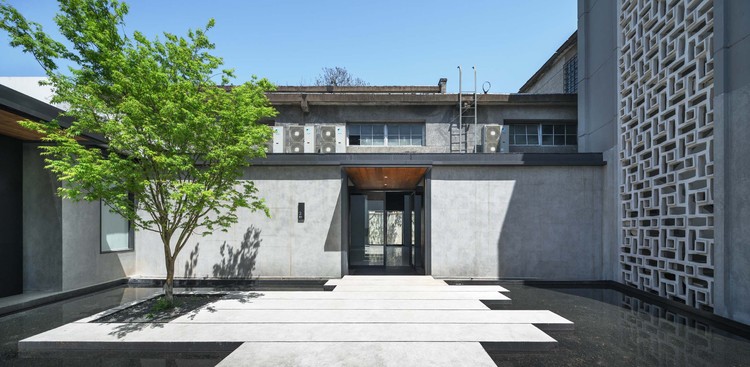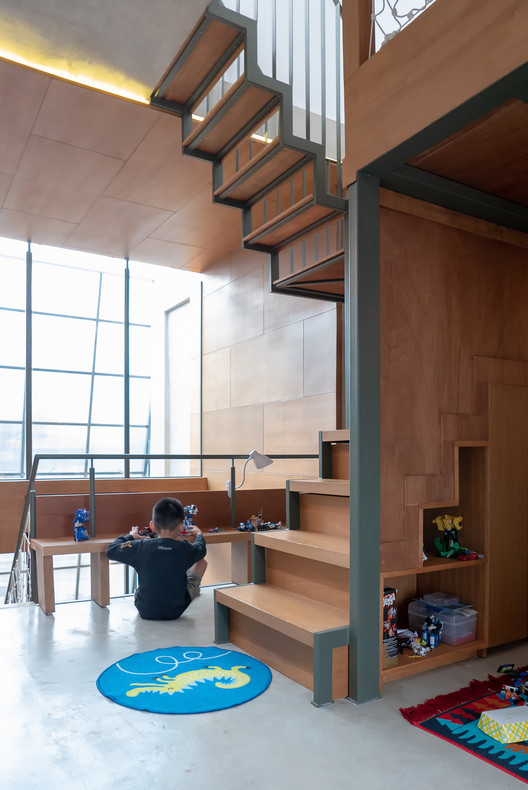The Factory Ricardo Bofill
2012-11-15 01:00
架构师提供的文本描述。1973年,里卡多·博菲尔(Ricardo Bofill)发现了一家废弃的水泥厂,这是世纪之交的一座工业综合体,由30多个筒仓、地下画廊和巨大的机房组成,他决定把它改造成高个子阿奎图拉的总部。改建工作持续了两年。这家工厂被废弃了,部分被夷为平地,它是超现实主义元素的汇编:爬到任何地方的楼梯,强大的钢筋混凝土结构,什么也支撑不了的钢筋混凝土结构,悬挂在空中的铁片,还有充满魔力的巨大空旷空间。
Text description provided by the architects. In 1973 Ricardo Bofill found a disused cement factory, an industrial complex from the turn of the century consisting of over 30 silos, subterranean galleries and huge machine rooms, and he decided to transform it into the head office of Taller de Arquitectura. Remodelling work lasted two years. The factory, abandoned and partially in ruins, was a compendium of surrealist elements: stairs that climbed up to nowhere, mighty reinforced concrete structures that sustained nothing, pieces of iron hanging in the air, huge empty spaces filled nonetheless with magic.
改造过程开始于拆除部分旧结构,使迄今隐蔽的形式可见,就像混凝土已经被雕刻过一样。一旦确定了空间,清除了水泥,并覆盖了新的绿色植物,这一进程就开始适应新的方案。保留了八个筒仓,成为办公室、一个示范实验室、档案馆、一个图书馆、一个投影室和一个称为“大教堂”的巨大空间,用于展览、音乐会和与建筑师的专业活动有关的一系列文化功能。这座建筑群坐落在桉树、棕榈树、橄榄树和柏树的花园中间。这个项目是一个事实的证据,一个富有想象力的建筑师可以使任何空间适应一个新的功能,不管它可能与原来的功能有多大的不同。
The transformation process began with the demolition of part of the old structure to leave hitherto concealed forms visible, as if the concrete had been sculpted. Once the spaces had been defined, cleaned of cement and encompassed by new greenery, the process began of adaptation to the new programme. Eight silos remained, which became offices, a models laboratory, archives, a library, a projections room and a gigantic space known as "The Cathedral", used for exhibitions, concerts and a whole range of cultural functions linked to the professional activities of the architect. The complex stands in the midst of gardens with eucalyptus, palms, olive trees and cypresses. This project is evidence of the fact that an imaginative architect may adapt any space to a new function, no matter how different it may be from the original one.
 举报
举报
别默默的看了,快登录帮我评论一下吧!:)
注册
登录
更多评论
相关文章
-

描边风设计中,最容易犯的8种问题分析
2018年走过了四分之一,LOGO设计趋势也清晰了LOGO设计
-

描边风设计中,最容易犯的8种问题分析
2018年走过了四分之一,LOGO设计趋势也清晰了LOGO设计
-

描边风设计中,最容易犯的8种问题分析
2018年走过了四分之一,LOGO设计趋势也清晰了LOGO设计
_%c2%a9_richard_powers.jpg)

_%c2%a9_richard_powers.jpg)

.jpg)

.jpg)

.jpg)

.jpg)

.jpg)

_%c2%a9_richard_powers.jpg)

.jpg)

.jpg)

.jpg)

.jpg)

.jpg)

_%c2%a9_richard_powers.jpg)

_%c2%a9_richard_powers.jpg)

_%c2%a9_richard_powers.jpg)

_%c2%a9_richard_powers.jpg)

_%c2%a9_richard_powers.jpg)



.jpg)

.jpg)

.jpg)

.jpg)

.jpg)

.jpg)

.jpg)

.jpg)

.jpg)

.jpg)

.jpg)

.jpg)

.jpg)

.jpg)

.jpg)

.jpg)

.jpg)





































